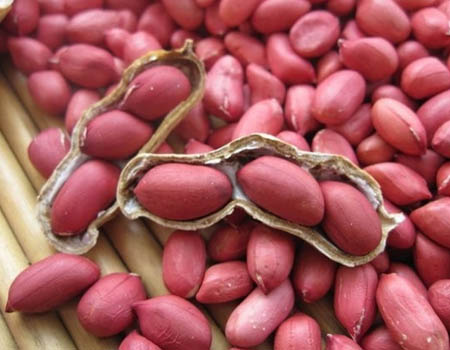The nutrition of peanuts and the function of peanut skin
The fat content of peanut accounts for 30%-39% of the total nutrient, while the fat content of corn, which is higher in vegetable food, is only about 4%. However, the threat of peanut to obesity is not large. It has the effect of reducing weight if eat in moderation. Peanut is the food with high heat, high protein and high fiber. It can increase the satiety, commonly known as “anti-hunger”. According to the research, the satiety caused by peanut is as 5 times as other high carbohydrate foods. Eating peanuts can reduce the need for other foods, relatively lower your total heat absorbing so as to achieve weight-reducing effect.

In addition, most of the fat contained in peanuts are unsaturated fatty acids, such as the arachidonic acid, which has the function of reducing blood fat and serum cholesterol, thus reducing the risk of coronary artery disease. However, the body itself can’t compound unsaturated fatty acids, which must be intaken through the diet. In addition, peanuts are rich in folic acid, dietary fiber and arginine, which can protect the heart.
Many people like to remove the skin of peanuts. In fact, the peanut skin can promote thrombocytopoiesis. Thus, it is suggested to eat peanuts with skin. The vitamin K in peanuts has hemostatic effect, while the hemostatic effect of peanut skin is 50 times higher than peanuts.
